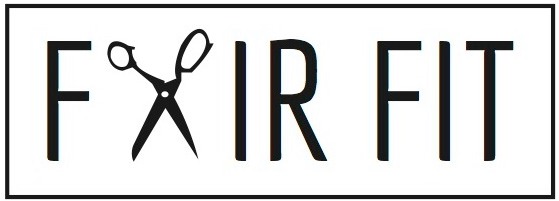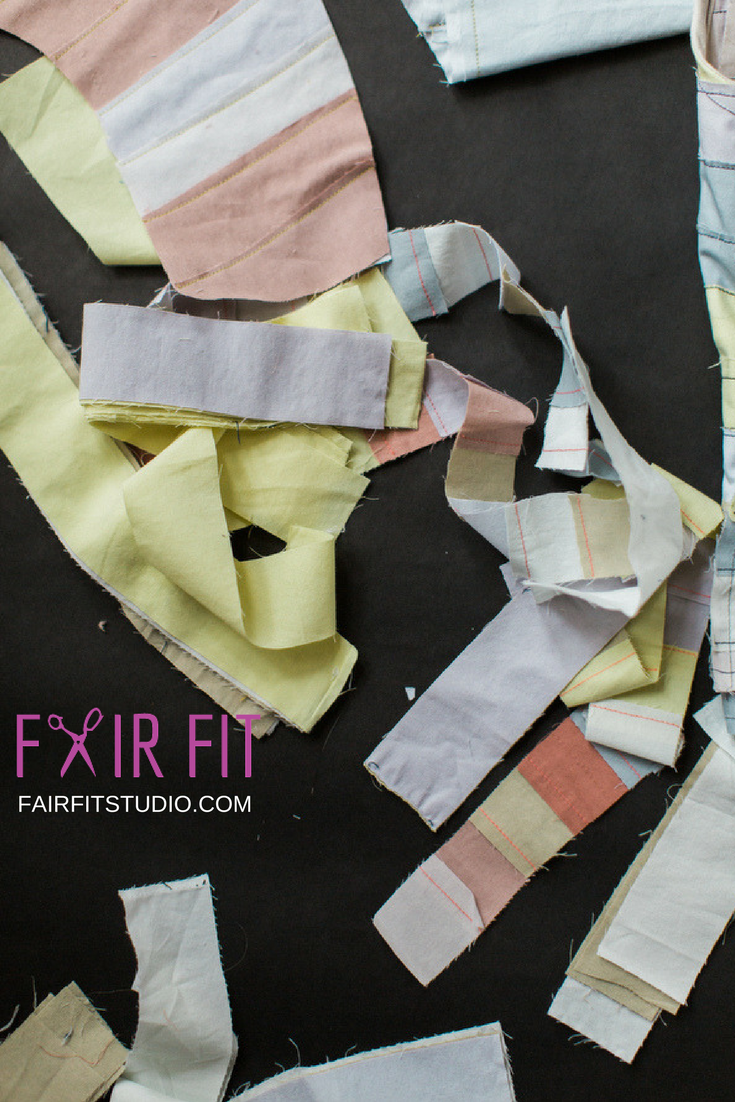Find Your Best Colors: How to Use Color Draping to Create a Custom Color Palate
During my journey to build a self sewn wardrobe, I did have some sewing fails, and one of the first ones I experienced was making a lot of clothing that was not the right color for me. I needed to slow down and refine my process in order to create items that really reflected my best me. After all, if I am going to go through all the trouble to sew an item of clothing from start to finish, I better start the process in the best way possible, right from the start.
And that means picking the right colors for my hair, skin, and eye tones!
Are you at a loss when it comes to color? Check out this process of choosing and understanding color to discover and create a customized palate. For those of you who want to create a custom wardrobe, and have the color be defined and specific, in this article and accompanying workbook, I have outlined a color draping tutorial for you that will introduce you to new hues you might have never considered. I’m going to use what I made for my wardrobe sewing practice and you might find it helpful too :)
Also, I do not get affiliate commission from anything recommended here. I just genuinely like and use all of the programs and books in this post, and I use them too!
To get started, lets visit some fashion wardrobe history. My mom had this book in the 80s, that I remember exploring when I was 9 or 10. Maybe you saw it too, or remember it? Its called Color Me Beautiful by Carole Jackson. I loved this book because even back then, I liked the idea of finding out what specific colors worked best for me. I was able to snag a copy on amazon for just a penny :)
But in my journey of art and design, I really didn’t think much customization for myself, because I really wasn’t designing clothing just for me. Though color was a huge part of my work, and was an area where I wanted to specialize, creating color palates for me was more about the story the color told than how it functioned for the individual.
I was never really one to follow fashion "dos" and "don'ts" and so in my past I actually used to really dislike the idea of color palate “draping”- the process of determining a unique color palate just for you. I believed it to be very limiting- hey what if olive green only signifies to me the army navy store? That’s didn’t fit the story or feelings I wanted in my clothing, no matter how flattering the color is when I wear it.
However, I have a curiosity and pursuit in my work and teaching to really dig into the specific purpose and story of clothing. That has always been an area of research and interest of mine, and how I composed the concepts in my clothing collections. In order to flush out where my current perspective is, I started with my own wardrobe, and I made a ton of stuff. And it turns out, a lot of the colors I chose in the fabric was not flattering for me, so I started over. Where I was failing to get a great final outcome in my sewn garments was by using a go to palate of colors I like in general, or on other people, but not considering if it would actually look good on me. After a few fails, I decided to do some research.
I’m going to share some really interesting things that got me really excited! Maybe you will want to try this too. Its a good weekend afternoon exploration if you are interested in sewing for the purposes of wardrobe building. After all, our time is precious, so the more successful we can make the items that we sew the happier we will be with the end result.
1. Color Typing
Color draping applies to all aspects of beauty, from makeup, hair color, to clothes. I am not an expert in this by any means- although I have been told color is a strong area artistically for me, I never customized a palate for my unique skin tone. I had been working through a wardrobe book to help me explore areas of clothing I’ve not considered or practiced. Its called - Into Mind: Personal Style and the Perfect Wardrobe. You can buy it as a pdf download, just know that it is an investment of probably a few months of conceptualizing and work. But I am working with it, and when I got to the color palate part I was all excited! I checked out my Pinterest, yep! All kinds of color that I love. But I slowed down, and remembered my goal to be more considerate. Do these colors actually look good on me? If so, why is my wardrobe all blue and gray? If I want to add more color specific to me, where do I start? So I googled color typing and the 4 seasons, remembering my mother's book. What I found was pretty insightful.
2. Intro to the 12 "Seasons"
Why I like this idea is because I know as a visual person that you have to set some limits or rules while creating, otherwise you will get lost in the sea of inspiration. While I love color, I’m not the expert to the extent that other's have researched it, I am going to link to people who are and their advice that I have followed. Though I do know some core colors that I’m really drawn to, I wanted to understand what level of saturation or hue might be best for me.
Here’s the funny part. I started to ask Paul, what color is my skin? I’m always assuming I’m fair, and because of my father’s Canadian lineage- fairly pink. I have ruddy cheeks because I inherited his fragile skin. And I burn easily. So I just assume I’m fair. However, Paul pointed out that I’m actually pretty yellow and its inherited from my mother’s olive skin. I never ever considered this, and its really been throwing off my color choices. I didn't know that when it comes to choosing color for me, that I’m color confused! So I went about my research, and as I would ask Paul his input, I realized its super hard to really see yourself because of the layers of what I told myself in the past.
Then, I created my palate, and you can make one too, using the workbook included in this post.
First I pulled up two photos of myself with my natural hair color, and the blond hair I have now. My skin is pretty much the same in both photos. Pink with yellow. I went into Canva and I dragged and dropped the two images side by side.
Then I went though the Into Mind color exercises linked above, determined that I am not a winter at all. I’m actually a soft autumn. I guess I want to be a winter so much because those are the colors I love to make art with- haha! I followed the process in the workbook to make a palate just like the one I showed you above. Print it out, or save it as a pdf, and use the same process to make your palate so you don't have to go back and forth to this blog post.
All I had to do in Canva was open up the site. Then I clicked a paper sized document so I could print this image out someday. Next, I dragged and dropped the two photos of me, and the Autumn palates. These will appear in Uploads (Yellow Arrow) and all you have to do is click them and they will appear on your blank page. I downloaded my image to my computer by clicking download and selecting image for print.
Next, I opened Pic Monkey. Pic Monkey is another free photo editing software that has a lot of great features. I don’t have Photoshop and I needed the color eyedropper tool. Here is the process:
First I clicked Edit at the top. Then the Choose a Photo to Edit came up, and I clicked the computer and selected by photo the palate image I made in Canva.
When you get into Pic Monkey, it looks like this. See where the Butterfly is on the left, Click it.
Next, a new menu will appear with Geometric at the top. Click Geometric. Next, click the square inside the Geometric box. Drag the square across your face, the point is to be able to get the color up against your skin. Now heres the fun part- Click the box in the Overlay that says Color 2. Then you will see that tiny eyedropper tool on the right. Click that tool.
Now you can hover over any color in the image to test it and see if you like it. I really liked the blue.
When you find a color you like, you should write the number down. That way you have it on record and can customize it in other applications. See in the Overlay box next to the box of color and between the eyedropper? That's your color number.
Here's the palate I discovered through this exercise. Although this did take me a couple hours on Sunday, it is easier than trying to find all the fabric, or items in those colors and hold them up against your skin! You can hire someone to do this for you, but this only took me a couple hours and I am really excited about the results!
Color is so important to me, that I often hand dye the colors used in my collections.
Using Your Color Palate
So I now have an entirely new palate to use in my wardrobe sewing endeavors. I like the idea that it will help me use colors I never thought of before, and try to incorporate them in my own way. I already have the patterns designed, but now my cloth can be specific.
And you know what that means!!
I’m going to buy some new dye! Now I can use my palate and dye the cloth to these specifics. I get really comfortable using certain colors I like and forget to introduce new ones. In each color there are a spectrum of variations. I’m not going to be a color nazi with this palate, and only limit myself to that exact color. But I will use these colors as a starting place to discover and experiment with new exciting hues.
If you like to dye, this is a really useful exercise. However, if you don’t, then that’s okay too. When you swatch fabric online, you can use your palate to narrow down the options. Most fabric stores will let you search by color.
This was so worth my time, its going to save me some color headaches in future sewing.













